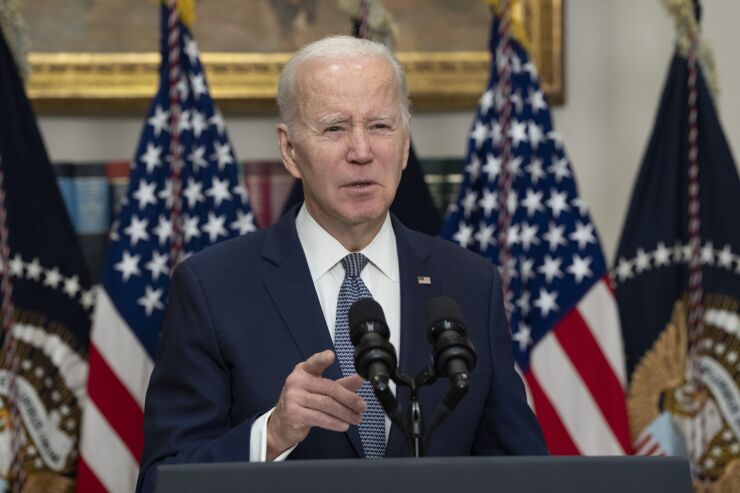
The Federal Deposit Insurance Corp.'s effort to find a buyer for the failed Silicon Valley and Signature banks is being made more difficult by lingering memories of arranged acquisitions during the 2008 financial crisis.
When the FDIC takes over a bank, it is bound to accept the resolution arrangement that represents the "least cost" to the Deposit Insurance Fund. Typically, the cheapest resolution is the acquisition of the failed bank by a larger institution. Thomas Vartanian, a banking lawyer and former regulator, said potential suitors for Silicon Valley Bank and Signature Bank are hesitant to sign deals since some of the buyers in 2008 later
"Many of the banks — including JPMorgan [Chase]and Bank of America — felt like they got abused in the last crisis," he said. "JPMorgan acquired
In 2012, four years after JPMorgan Chase acquired the investment bank Bear Stearns, the New York attorney general accused the acquired investment bank of fraud and subsequently sued. CEO Jamie Dimon claimed JPMorgan lost billions of dollars and said his firm was punished for doing what he characterized as a favor to the Federal Reserve in buying the investment bank.
Typically, when the FDIC thinks a bank might fail, the agency has a discrete, 90-day process to arrange a sale, and the agency is required by law to accept the arrangement that is the least expensive to the insurance fund. That process involves estimating asset values and assessing which of the failed bank's deposits are insured, accepting bids and setting up a receivership to manage any remaining balance sheet items.
John Bovenzi, co-founder of The Bovenzi Group and a former FDIC official, said that the FDIC apparently received no realistic bids for the banks when it was initially looking for a buyer.
"I don't believe the FDIC had any plausible bids. If they did, they would have taken them," Bovenzi said. "Given the speed at which everything developed, bidders couldn't accurately determine the value of the loan portfolio. As a result, any bids they made would have to be very low to minimize their risk."

The speed of events left regulators with fewer options, and as a last resort, the agency established a bridge bank on Monday, an arrangement not seen since the FDIC took over IndyMac in 2008. The FDIC is currently in the process of seeking parties interested in buying all or some of the assets.
Cam Fine, president and CEO of Calvert Advisors and former CEO of the Independent Community Bankers of America, agreed that big banks are far less eager to wade into the legal trouble of acquiring a bank from the federal government after 2008.
"The great financial crisis of 2008 left a bad taste in the mouth of banks that made deals with the government, only to have the government change the terms of the deals later on to the detriment of the buying bank," Fine wrote in an email. "Agencies have to move fast when there's a crisis like you saw what happened — they were in there in a flash to put in a bridge bank — but the rest of this process will move a lot slower now."
John Popeo, principal at The Gallatin Group who worked for the FDIC leading bank-failure deals during the financial crisis, thinks it's likely that ultimately, several banks may bid together for portions of the failed banks.
"I could envision an 'alliance bid' that would involve multiple regional banks or smaller institutions in the purchase of different assets and liabilities," Popeo wrote in an email.
He added that the business models of the two failed banks could present divergent prospects for their acquisition.
"While both SVB and Signature are tech-oriented banks, the business models were very different with SVB serving as a partner to the San Francisco tech community, and Signature focusing more on commercial real estate and crypto," Popeo said. "Prospects for each institution would be different given the business models of each bank."
But Bovenzi said that while no bank has emerged as a buyer yet, that doesn't necessarily mean no bank ever will. Splitting up the failed bank expands the universe of buyers beyond other banks, as well, he said.
"They can reach a wider audience that includes entities that don't have a bank charter and may have expertise in areas relevant to certain types of loans," Bovenzi said. "They may again offer the failed banks in their entirety as well. The FDIC could get better bids once interested banks have a chance to better analyze the failed banks' loans."





